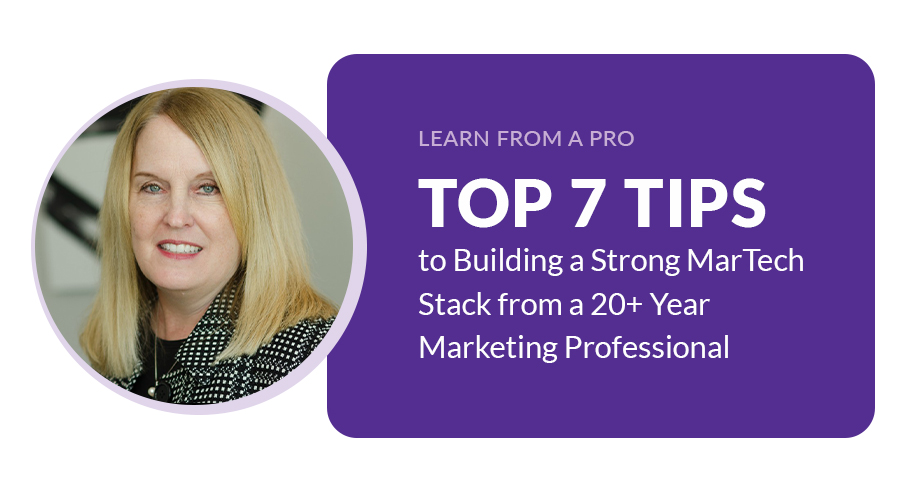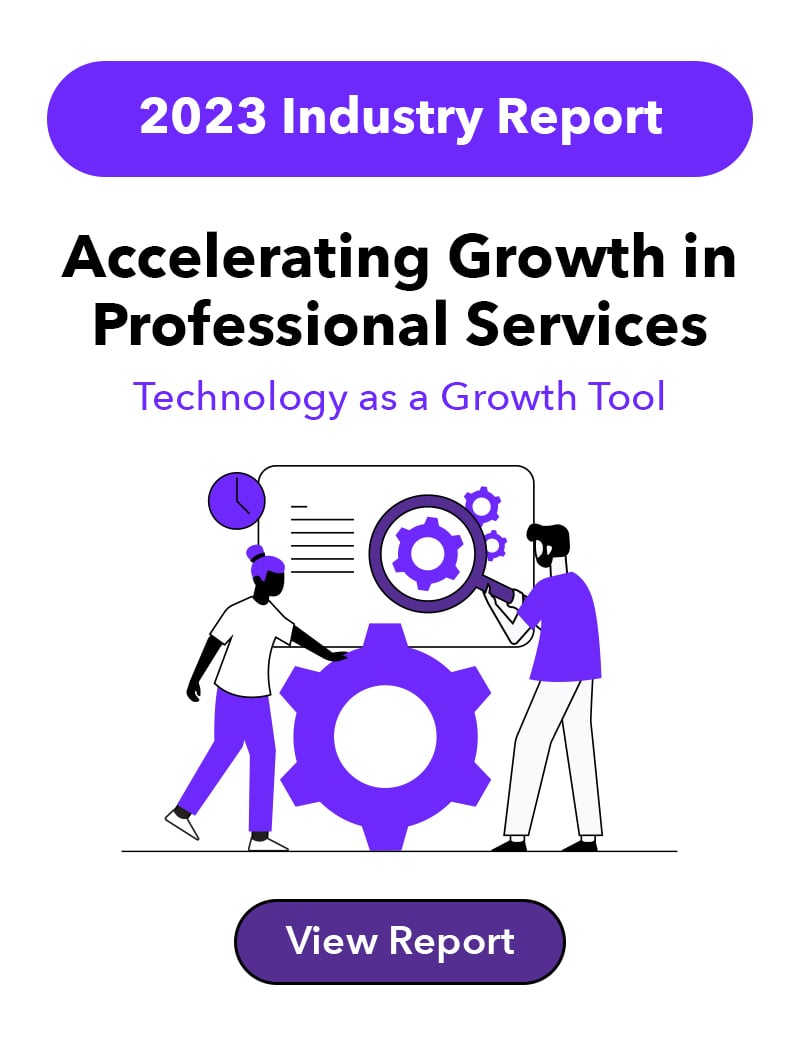As a marketing leader, technology evaluation and selection have been core to my job for a number of years. No matter how skilled you are in marketing strategy, if you and your team don’t choose the right tools for your martech stack, your team won’t be able to perform at the same level as other tech-savvy teams.
That being said, knowing which tools you should invest in (and which you should ignore) is one of the more challenging dilemmas faced by today’s marketing leaders. There are new technology opportunities popping up all of the time! It can be easy for today's marketers to either waste a lot of money implementing software that doesn’t ultimately solve your challenge, or to let your due diligence in selecting technology turn into procrastination or worse yet, no decision.
My approach (as in most marketing scenarios) is “crawl, walk, run.” It’s important to make small, iterative changes to prove success and then roll those small changes into a broader, positive shift.
In my experience leading teams building multiple martech stacks, I’ve uncovered some of the most important questions to consider before investing in technology. These questions and due diligence have always helped the great teams I’ve been so fortunate to lead, build a strong and efficient ecosystem of tools to be hype-agile and effective.
My top tips: (Click to jump to the section!)
1. Define the problem you want to solve
2. Consider your current processes
4. Automate repetitive, nonstrategic tasks
5. Create a cohesive martech ecosystem
6. Get references and validate expertise in your space
7. Prioritize ease of use and training
Start by Defining the Problem You’re Trying to Solve
There’s no shortage of software out there that can solve any problem you could think of. And many of them are incredible solutions. But no matter how great a technology is, it doesn’t mean that it’s right for your team, your growth strategy or your budget.
That’s why it’s essential to define the specific problem you’re trying to solve and the goal that you want to achieve with the software. This goal should be specific. So instead of a goal to “save money,” the goal could be to “get more X done without hiring new people.” This specificity helps you put parameters around what time to value would look like, allowing you to check in post-implementation to see if the software is worth continuing to use.
While some software can address multiple challenges, I typically advise teams to stack rank the opportunities for improvement, to stay focused on solving the problems that create the most friction. Then use that opportunity list to create a requirements document. Your requirements will help you focus on your priorities and not get distracted during the buying process. Trying to solve too many problems at once can cause you to lose sight of how you are going to accomplish your goal.
Consider How Your Current Processes Will Be Improved or Impacted
Software is incredible, but it’s not magic. You can’t expect software to correct poor internal processes or bad communication, so it’s important to be realistic about where you’re currently at, what needs to change before you implement the software, and how far the software can truly take you.
One of my tried and true methods of analyzing how my team’s current processes will align with a software purchase is to map out the ideal process. Consider how input and action converge to make your marketing process solid. To take advantage of software, you may need to implement some key non-tech processes first. Failure to do this could result in lackluster results from otherwise effective software.
In other words, any process that can’t be improved by technology, but will impact the way technology works, needs to be considered from the beginning stages.
One of the more common problems I’ve seen is a team that implements robust software but doesn’t have the in-house expertise to handle it. This occurred at a previous employer when we implemented a popular marketing automation tool, that required developer expertise. We only had one person with this skillset on our team, so too much responsibility was always on her plate, which hindered our ability to take advantage of our investment (and frustrated this individual).
Always Choose SaaS
Software as a service (SaaS) has grown in popularity over the past decade and for good reason. When I’m faced with a need to bring a new tool into my martech stack, I always opt for SaaS — rather than a consultant’s in-house tools, custom build, or a behind-the-firewall solution. SaaS benefits are numerous but I prefer SaaS products because of lower overall costs, efficiency, built-in upgrades and support and general ease of use.
For example, years ago, my RevOps team needed an online CRM. We considered going with a market-leading SaaS solution, but our CIO advocated for going the build vs. buy route to keep the costs “internal”.
In the end, the organization spent more money and more time creating a less flexible and scalable home-grown solution. And in addition to the months and months of our IT team’s time that was taken up, the result was a product that didn’t work nearly as well as the market-leading solution would have and that the internal IT team didn’t have time to support.
Automate Repetitive, Nonstrategic Tasks
One of the most valuable benefits of technology is that it should directly benefit your team. When considering any new addition to your martech stack, you want to ensure it’s helping your team work more efficiently. With fewer manual tasks on their plates, your team will have time (and energy) to put into strategic work that helps you contribute to your organization’s growth.
You can’t talk about automation without the topic of AI (artificial intelligence) entering the conversation. While some organizations are embracing it, and others are banning it, eventually using AI in some format is going to become commonplace, so it’s important to establish guiding principles about how your organization can leverage it.
However, AI isn’t the only way to generate meaningful time savings.
Helpful automation tools could be as simple as a tool like Sprout Social, where you can eliminate the need to manually post on social media. Or it could be a more advanced use case like Pitchly’s content automation capabilities. The software allows you to differentiate your brand and populate dynamic customer content templates like pitch material with data from a centralized database.
Consider How the Martech Ecosystem Will Work Together
Marketing technology doesn’t exist in a vacuum. Your martech stack should, ideally, fit together as a cohesive ecosystem.
Some tools come with out-of-the-box integrations for popular tools like Salesforce, Hubspot, etc. But you want to double-check that you’re able to integrate with all of the tools needed to make the most out of your investment.
Expectation setting is important. You don’t want to assume everything is going to be perfect. Instead, you want to ask product-focused questions to get the real picture. For crucial integrations, it's great to actually see how the integration works so you can see how the improved process will benefit your team.
If there’s no out-of-the-box integration with the systems you need but there are open APIs, this can help you accomplish your integration goals. Just make sure that you have the in-house expertise to create and maintain this integration, or the budget to hire a consultant to lend you their skills.
Get References and Validate Expertise in Your Space
There are a variety of ways you can get the hard proof you need. Ask for case studies to demonstrate that they’ve solved the exact problem you’re trying to solve. It's also great to see if you can speak to their clients using the product for similar use cases.
Another way to make sure that the organization understands your needs and industry as a whole is to look at the thought leadership they’re publishing. If they can demonstrate a nuanced understanding of the variety of topics, pain points, and trends that affect your organization, it’s much more likely that the solution was built on a strong foundation for you.
Prioritize Ease of Use and Training
Great software is useless if your team never touches it. So I always prioritize ease of use to make it more likely that my team will be willing and able to make the most of any software we implement.
You’ll want your team to be excited about what this software will help them accomplish, not stressed out by the extra time needed to learn how to utilize a complicated tool. I find it helpful to include team members in the buying process to allow them to get involved, validate the need for new software, and consider how it will impact their everyday workflows.
Even for easy-to-use tools, though, some amount of training is required to maximize your usage. This training should be efficient, hands-on, and repeatable so that it can be accessed on-demand or shared with a new team member. It’s sometimes helpful to leverage power users that naturally emerge to lead the charge for ongoing training as the software updates.
Technology is an important (and expensive) investment - so choose wisely
With the constantly evolving landscape of technology available to every industry, it’s important to be intentional about the tools you choose and to consistently revisit your martech stack to make sure it’s working like it’s supposed to.
A great suite of technology can mean the difference between a high-powered, efficient, and engaged team, and one that’s struggling to stay afloat.
If you’re looking for a solution to help you centralize your data and leverage that data with automated, dynamic content templates to create compelling custom content and documents, check out Pitchly. Tune into our quick walkthrough video below to see how we can help you cut your pitch material creation time down to a fraction of what it was before.
About the Author:
As a senior marketing leader with 20+ years of experience, it’s Ann Torry's passion to combine integrated B2B marketing strategies and servant leadership practices to yield measurable success and growth. She's assembled and led numerous growth teams that have been on the Inc. 5000 fastest-growing company list and she's excited about digital transformation, custom content, and mentoring future marketing leaders.
 Jul 18, 2023
Jul 18, 2023




